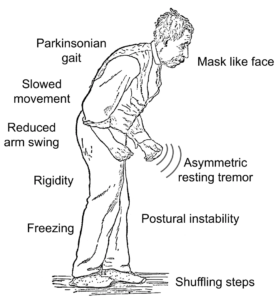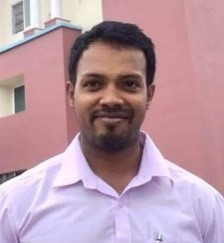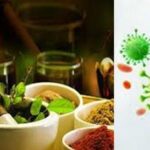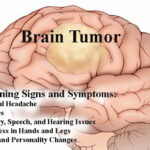Parkinson treatment in ayurveda : A ray of hope. Ayurveda can be preventive, curative and front line treatment for Parkinsonism and many such aliments than just an alternative therapy.
What is Parkinsonism?
Parkinsonism is a clinical syndrome characterised by tremor at rest, rigidity, postural an gait abnormality due to distinctive pathology of brain, where there is degenerative changes in brain stem nuclei including dopaminergic substantia nigra, pars compacta with presence of lewy bodies in the remaining cells. This disease is commonly known to affect the older age group i.e., over the age of 65 yrs. Early onset features can occur before the age of 40 years. It is said to be more common in men than in women in most populations.
Causes for parkinsonism
The exact cause for the disease Parkinsonism is unknown. It is believed that combination of several factors are involved in the development of Parkinsonism such as aging, environmental toxins such as exposure to pesticides and genetic predisposition. There is an high risk in people who are exposed to some pesticides and also among those who have had earlier head injuries.
Pathology involved
The actual pathology involved in Parkinsonism disease is degeneration of substantia nigra (Present in brain), loss of dopaminergic neurons; which in turn lead to deficiency of dopamine leading to manifestations such as abnormal movements, tremors, impaired balance and posture; which are said to be the characteristic feature of Parkinsonism.
Diagnosis
More often the diagnosis of Parkinsonism is based on the clinical observations, the presenting signs and symptoms and detailed history. Other diagnostic aids such as CT and MRI brain can be used to rule out other disease.


Clinical Presentation of Parkinsonism
The most obvious early symptoms are tremor, rigidity, slowness of movement, and difficulty with walking. Parkinson’s disease dementia becomes common in the advanced stages of the disease. Depression and anxiety are common. Other symptoms include sensory, sleep, and emotional problems.
Treatment
There is no cure for Parkinson’s disease. It’s just treating the actual symptoms with drugs useful for treating motor symptoms are levodopa, dopamine agonists and MAO-B inhibitors. Other rehabilitative therapy like exercise programs are recommended in people with Parkinson’s disease
Understanding Parkinsonism in Ayurveda
In Ayurveda each and every disease is understood in terms of Doshas Vata, Pitta, Kapha and this Parkinsonism disease based on its clinical features can be compared with that of Kampa Vata where predominantly there is impairment of Vata Dosha in the body. Literally the term Kampa Vata means, a disease caused by Vata Dosha having Kampa (Tremors) as a characteristic feature. Bench mark of Ayurveda specifies Karapadatale Kampa (shake in hands and feet), Dehabhramana (Instability in Postur), Mati Kshaya (Dementia), Stambha (Stiffness), Nidrabhanga (Distressed sleep), Chesta Hani (Slow movement), Vinamana (Bent Posture), and Vakvikruti (Speech chaos) as the clinical structures of Kampa Vata which accurately resembles with that of Parkinsonism Disease.
Treatment in Ayurveda
As the disease is mainly caused due to Vata Dosha Snehana (Oleation) and Swedana (Sudation) line of treatment would be beneficial. The specific line of treatment mentioned for Kampa Vata is Abyanaga (Oil Massage), Swedana (Sudation), Virechana (Purgation), Anuvasana-Niruha Basti (Enema Therapy) and Siro Basti (Retension of oil on head). Based on the intensity of Dosha Vitiation one can plan permutation and combination of these therapy according to the patient presentation.
Success case story
A Parkinsonism diagnosed; non-diabetic and non-hypertensive, male patient of age 68yrs hailing from Bangalore visited our OPD with complaints of bilateral shaking of hands and legs, postural disability, dementia, short step gait and unable to perform his day to day activities without any support. Suffering with these complaints since from last 4yrs. History revealed; no members in the family suffered from similar complaints, no history of trauma.
The course of disease onset was gradual starting with shaking of extremities, difficulty in movements especially walking, sometimes suffered from constipation and increased frequency of urine.
Treatment given
- Sarvanga Churna Pinda Sweda (Powder hot poultices therapy) with Jadamayadi and Kottamchukkadi Churna for 7days.
- Sadhyo Virechana (Purgative therapy) – Gandharva Hastyadi Taila – 40ml + Milk – 40ml
- Sarvanga Abhyanga (Oil Massage) + Patra Pinda Sweda (hot poultices therapy with leaves having medicinal properties)
- Eranda Mooladi Qwatha Basti (Enema therapy)
- Internally – Kapikachu Churna – 1tsp twice a day; with ½ glass of warm milk for 1 month
As it is a degenerative neurological disease there is necessity of treatments to be followed for multiple sittings for better and promising results. Hence forth on 2nd visit; patient was treated with
- Sarvanga Churna Pinda Sweda (Powder hot poultices therapy) with Jadamayadi and Kottamchukkadi Churna for 7days.
- Sadhyo Virechana (Purgative therapy) – Gandharva Hastyadi Taila – 40ml + Milk – 40 ml
- Sarvanga Abhyanga (Oil Massage) + Patra Pinda Sweda (hot poultices therapy with leaves having medicinal properties)
- Rajayapana Basti
- Internally – Ashwagandha Churna 1tsp; twice daily with ½ glass of warm milk for 1 month.
The signs and symptoms were markedly reduced and patient felt better by about 60-70%. Based on the clinical assessment on the next follow up treatment course will be decided.
Probable mode of action
Abyanga and Swedana treatment would counter act on Vata Dosha thereby reducing the symptoms such as tremors, rigidity, improving the posture and daily routine. (Pakvashaya) Large intestine is the main seat of Vata. Vata is one which controls all the neurological activities, Basti is the treatment applied directly to the main seat of Vata. Dhatukshaya abnormalities of Vata can be treated through Basti Karma.
Vata is the chief cause of Kampavata when Vayu is controlled by the action of Basti all other disturbed body elements fall into almighty and equilibrium. Basti helps to strengthen the joints, soft tissue and rejuvenate the health.
Last but not the least I would like to say Ayurveda in right hands can be preventive, curative and front line treatment for many such aliments than just an alternative therapy.
“Ayurvedo Amrutanam”


Dr Midhun Mohan
Pancha Karma Consultant
Adichunchangiri Ayurvedic Medical College
Nagarur, Bangalore
Mob: 8197430761











